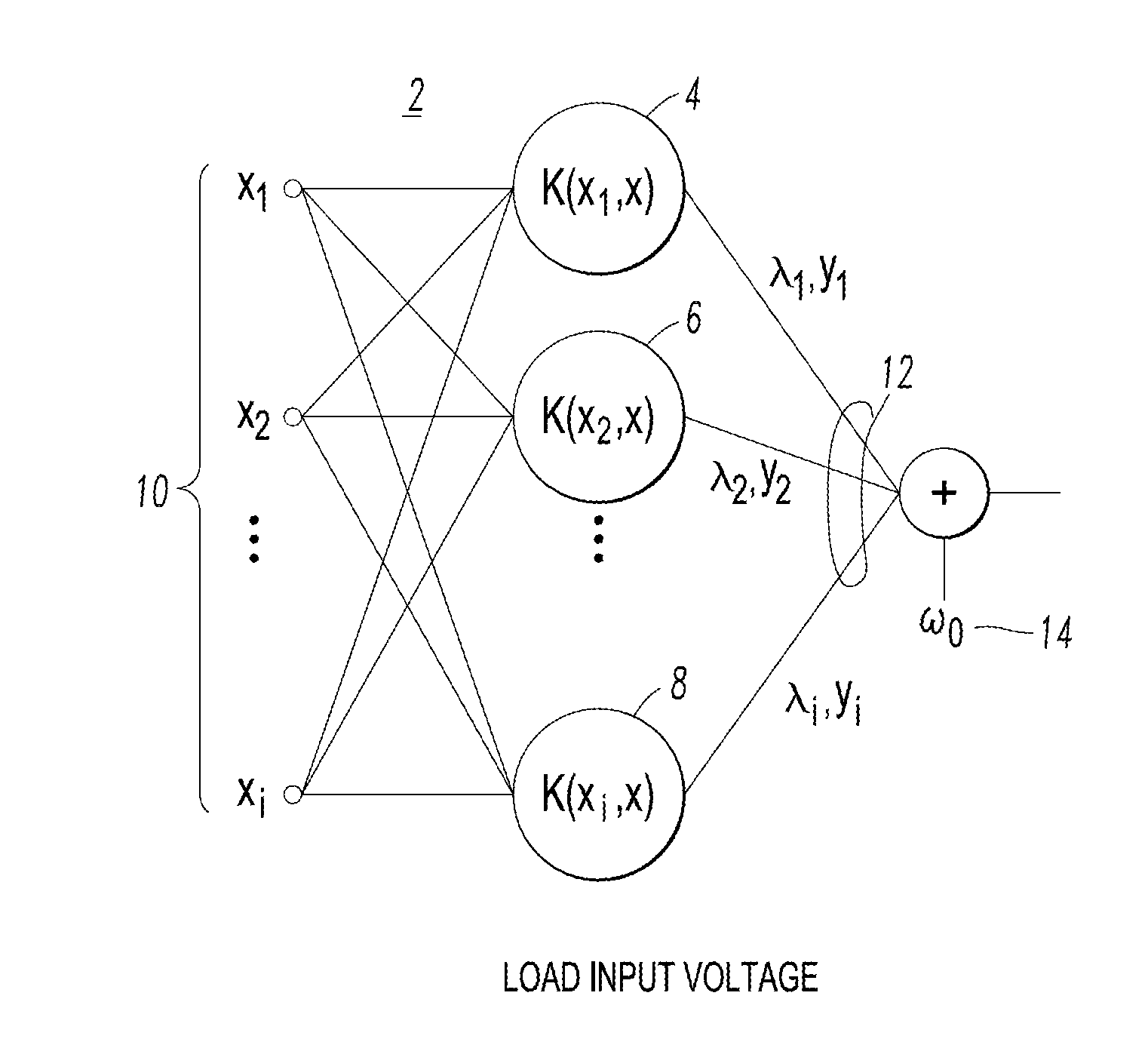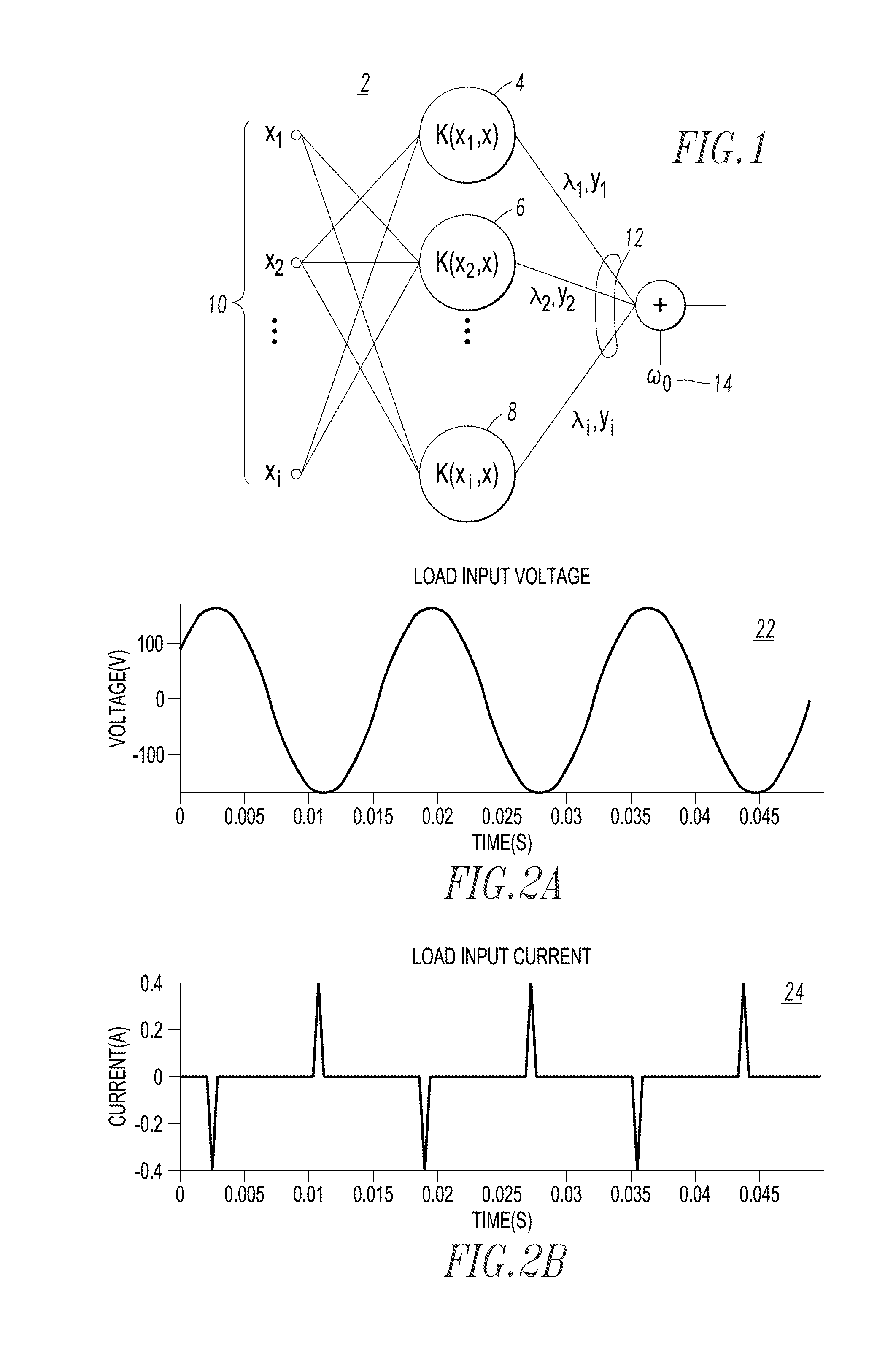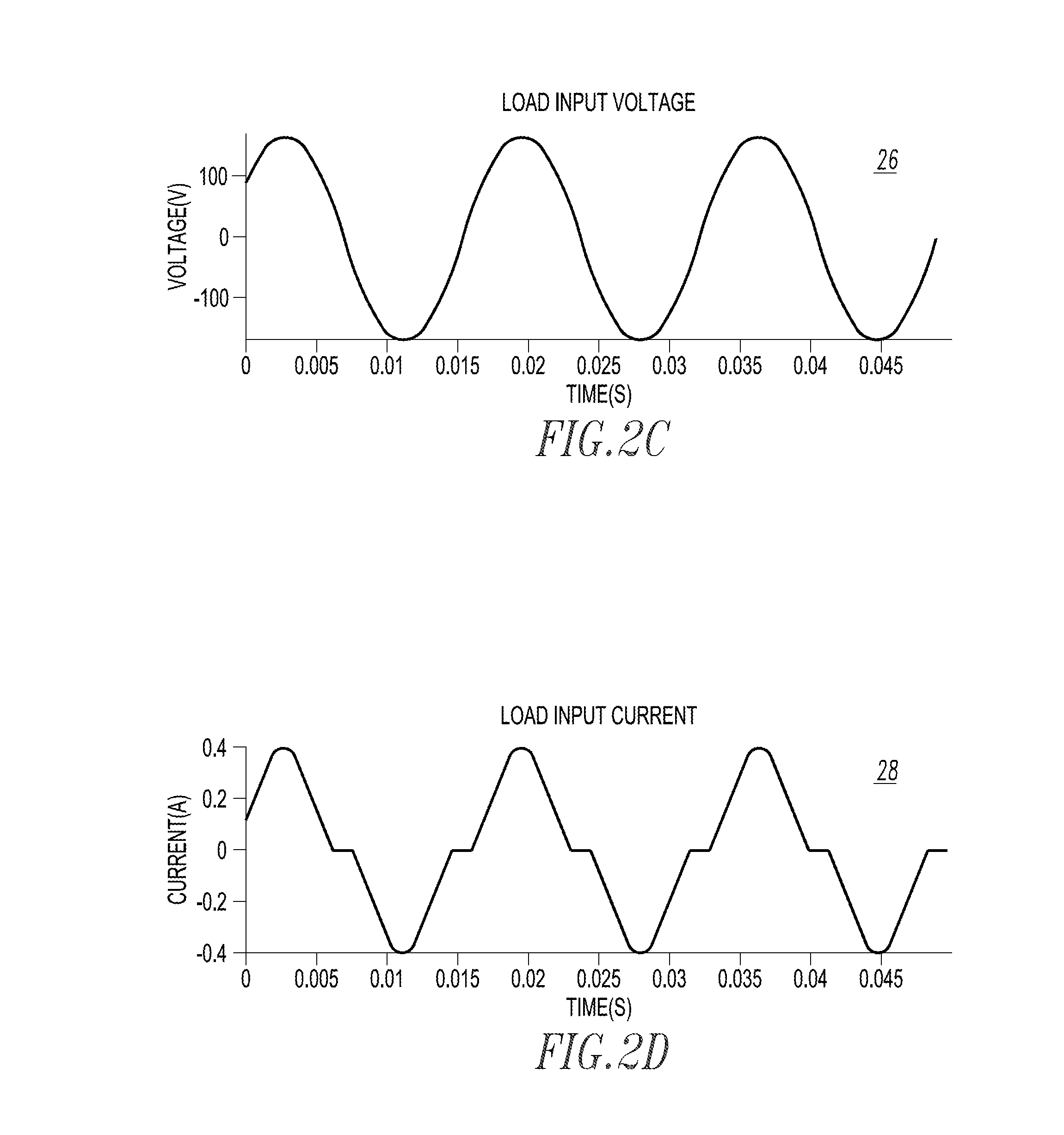System and method for electric load identification and classification employing support vector machine
a support vector machine and electric load technology, applied in the field of electric loads, can solve the problems of mels consuming more electricity than any other single end-use service, sensitive equipment such as a plugged-in desktop computer, and mels presenting special challenges
- Summary
- Abstract
- Description
- Claims
- Application Information
AI Technical Summary
Benefits of technology
Problems solved by technology
Method used
Image
Examples
example 1
[0094]Therefore, the advantage of the disclosed set of steady-state features over using harmonics is shown by tests as summarized in Table 1. In this example, the total number of available feature vectors for training and testing is 3600, and three different cases are tested and compared. The results are generated by solving multi-class one-against-all SVMs. This compares testing success rate of different features sets using a multi-class one-against-all SVMs.
TABLE 1Success rate270 points540 points1080 pointsfor training,for training,for training,and 3330and 3060and 2520pointspointspointsfor testingfor testingfor testingDisclosed 100% 100% 100%set of sixexamplesteady-statefeaturesHarmonics99.56%99.53%99.43%as features
It is clear to see from Table 1 that simply using harmonics cannot guarantee a 100% success rate even with only three relatively distinct MELs.
[0095]Data was collected, processed and employed from commercially available MELs 48. Steady-state features of an example se...
example 2
[0105]Table 2 summarizes several tests to show the performance of the disclosed method and system 110 for MELs identification, including the testing success rate. These test the performance of the multi-class one-against-all SVM classifier 58 of FIG. 4 on a relatively large number of MELs including a selection of typical MELs.
TABLE 2IdentificationMELsSuccess Rate (%)Compact98.67FluorescentLightsFluorescent100.00LightsIncandescent100.00LightsFan100.00Printer99.66Cellphone100.00ChargerDVD player98.66Heater100.00LCD TV99.72LED TV93.33Microwave100.00Plasma TV89.66Set Top Box100.00
example 3
[0106]The multi-class one-against-all SVM classifier 58 of FIG. 4 is compared against SSOM classifier performance with different amounts of data. One advantage of the disclosed multi-class one-against-all SVM classifier 58 is that it employs a relatively small amount of training data compared with other classifiers. Some test results containing three loads and different choices of cross-validation are shown in Table 3, in which the ratios between training data and testing data are indicated in the first column. The following tests are carried out when both classifiers are trained by feature vectors from 32 different models of 12 types of MELs, with 3600 feature points for each model. For all of the tests disclosed herein, 512-point FFTs are done to calculate the features.
TABLE 3SuccessRateDVDTVFanTotalSVM 100%93.77% 100%97.92%(5% fortraining,95% fortest)SVM 100%93.43% 100%97.81%(10% fortraining,90% fortest)SVM 100% 100% 100% 100%(20% fortraining,80% fortest)SVM 100% 100% ...
PUM
 Login to View More
Login to View More Abstract
Description
Claims
Application Information
 Login to View More
Login to View More - R&D
- Intellectual Property
- Life Sciences
- Materials
- Tech Scout
- Unparalleled Data Quality
- Higher Quality Content
- 60% Fewer Hallucinations
Browse by: Latest US Patents, China's latest patents, Technical Efficacy Thesaurus, Application Domain, Technology Topic, Popular Technical Reports.
© 2025 PatSnap. All rights reserved.Legal|Privacy policy|Modern Slavery Act Transparency Statement|Sitemap|About US| Contact US: help@patsnap.com



